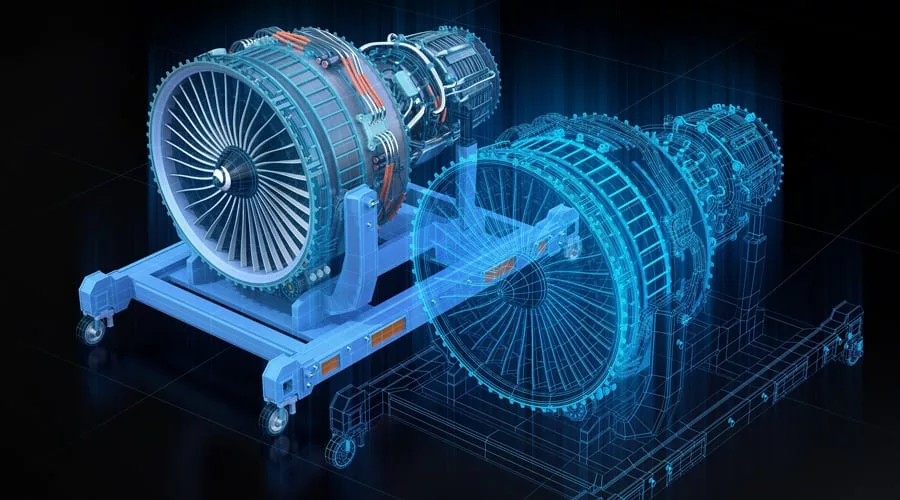The need for data in the Asia-Pacific region has driven the expansion of digital economies across this area. In the coming times, the transition toward more devices within a connected network setting sets higher benchmarks for cloud ecosystems alongside the connectivity and automation solutions they can supply.
Driven by cloud computing, we anticipate the emergence of 4 innovations to achieve higher efficiency and sustainability.
#1 Ambient Computing Drives the Shift Towards Comprehensive Digital Services
Ambient computing is a broad concept that characterizes a setting where intelligent devices, combined with artificial intelligence (AI), machine learning (ML), data, and human engagement, collaborate harmoniously to produce results without human commands or interference. This concept departs from predetermined workflows, emphasising facilitating computerized actions that seamlessly intertwine with daily life.

The Internet of Things (IoT) revolution has advanced through ambient computing, integrating technology into daily life. Technology is set to become integral to our professional and home environments through ambient computing. Through the constant data collection of device sensors activated by visual and auditory cues, AI will be empowered to make decisions independently, reducing decision-making friction.
Forecasts indicate that IoT expenditures in the Asia-Pacific region will ríse to $436 billion by 2026, promising increased investments and the potential to reshape various industries. As of 2022, Singapore is at the forefront of Southeast Asia’s IoT spending, likely driven by nationwide digital transformation initiatives and the country’s aspirations for smart city development.
#2 Digital Supply Chains Drive the Progress Towards Industry 5.0
The aspiration of the forthcoming generation of digital supply chains is ambitious: constructing a supply network characterized by resilience and responsiveness. However, the current economic climate retains significant potential for disturbances; abrupt fluctuations in demand, scarcities of raw materials, and natural calamities can disrupt even the most devised supply chain strategies.

Companies have been diligently working to revolutionize their supply chains in response to these vulnerabilities. The ongoing digitization of supply chains will accelerate the progression towards Industry 5.0, a phase where optimal efficiency and productivity can be achieved through collaboration between humans and robots. This highlights the essential of hyper-connectivity and automation within the Industry 5.0 ecosystem.
#3 Digital Twins: Moving Beyond Automation Towards Sustainability
The market scale of digital twins in the Asia-Pacific region reached $1 billion in 2019 and is projected to experience a CAGR of 35% until 2026. This surge is attributed to the increasing governmental efforts to foster IoT infrastructure and smart urban centers.

Harnessing digital twins, companies are reimagining how they measure energy usage and discharges. This empowers them to replicate multifaceted situations and determine the most effective strategy for attaining sustainability targets. As a result, they enhance their efficiency in bringing products to market promptly and curbing the hazards linked with intricate undertakings.
Enhancing operational efficiency isn’t the sole advantage stemming from digital twins. Digital twins also empower enterprises to fulfill their ESG (Environmental, Sustainability, Governance) objectives.
#4 Future Data Centers and Environmental Stewardship
In an unpredictable economic context, numerous enterprises, particularly SMEs, are refraining from investing in sustainability because they perceive it as an unnecessary expense that doesn’t directly generate income.
A heightened understanding of the advantages of digital transformation and sustainability would encourage SMEs to engage in investments with more assurance, such as adopting colocation facilities. These facilities curtail energy consumption for businesses by distributing cooling and power demands among multiple clients.

Moving ahead, sustainability retains its central emphasis, requiring data centers to address the impacts of climate change while actively working towards achieving carbon neutrality. Although digital twins have been associated with manufacturing, they are now instrumental in resolving sustainability challenges by expediting the creation of forthcoming data centre models that align with ESG standards.
Consider transforming digitally?
If you’re ready to collaborate with an enterprise software development firm to create better software projects with fewer distractions, CMC Global is here to help.
CMC Global is ready to partner with you to reach your technical goals, whether you’re modernizing a legacy application or undergoing a complete digital transformation journey.
We leverage deep business knowledge with the latest advances in software development, including cloud computing, data analytics and AI.
Ready to update your approach to corporate software development? Contact us for further information.





